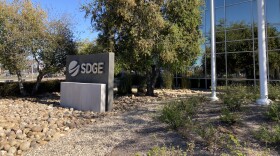Dialing 911 in an emergency first got going in the 1970s, when people actually dialed 911. Nearly a half century later, the city of Chula Vista has unveiled the nation's first 911 system for the live streaming age.
Callers won't notice a difference, at first.
“You will call 911, you’ll have a dispatcher, a call taker who will answer, '911 what is your emergency,'” said Lt. Don Redmond of the Chula Vista Police Department.
But that’s where the similarities between the 911 we’re all familiar with and this new kind of 911 come to an end. Now, when Chula Vista residents call for police, they get placed into a new system called “Live 911.”
“With Live 911, the officer’s almost eavesdropping. They’re listening to the conversation between the dispatcher and the caller and it immediately pops up on the screen, their exact location,” Redmond said.
RELATED: Chula Vista PD Approved For Broader Use Of Drones In Law Enforcement
All Chula Vista police vehicles are now equipped with special laptops that not only allow officers to hear the conversation, but also pinpoint the exact location of the person making the call.
In its first six months, police Chief Roxana Kennedy said the new system is shaving seconds, sometimes minutes off response times.
“If an officer has the ability to get there quicker and your family member or you are in a situation where it’s potentially life or death, will 30 seconds make a difference to you?” Kennedy said.
Live 911 also allows officers to hear the kind of detail that, in the past, could get lost in translation. Lt. Redmond gave an example.
“Maybe it is, the car is fleeing and it has a sticker on the back window that looks like something and the officer hears that and then sees a vehicle and sees that sticker, that could be us capturing the bad guy or not,” he said.
The idea for Live 911 came from retired Chula Vista Captain Fritz Reber. He worked with a software company called Higher Ground to develop it.
With policing practices under the microscope across the nation, Kennedy said "Live 911" can also be useful in helping to de-escalate situations.
“This is an opportunity to help officers have more information to make better informed decisions, to get there quicker and to save people’s lives,” she said.







